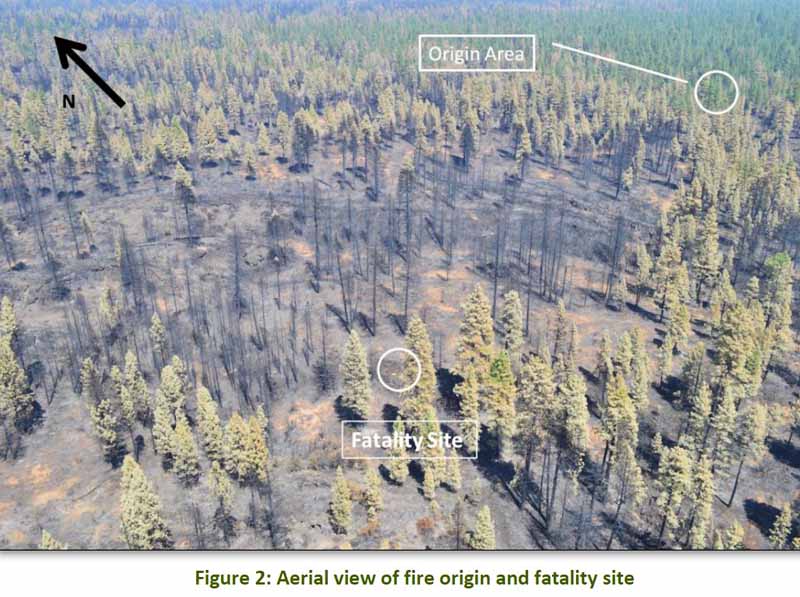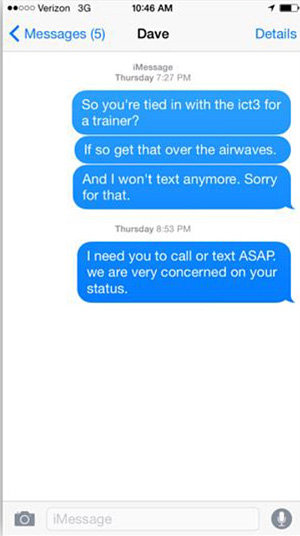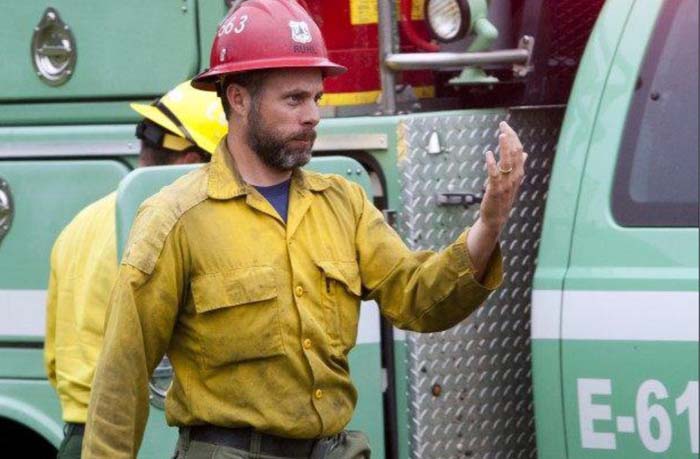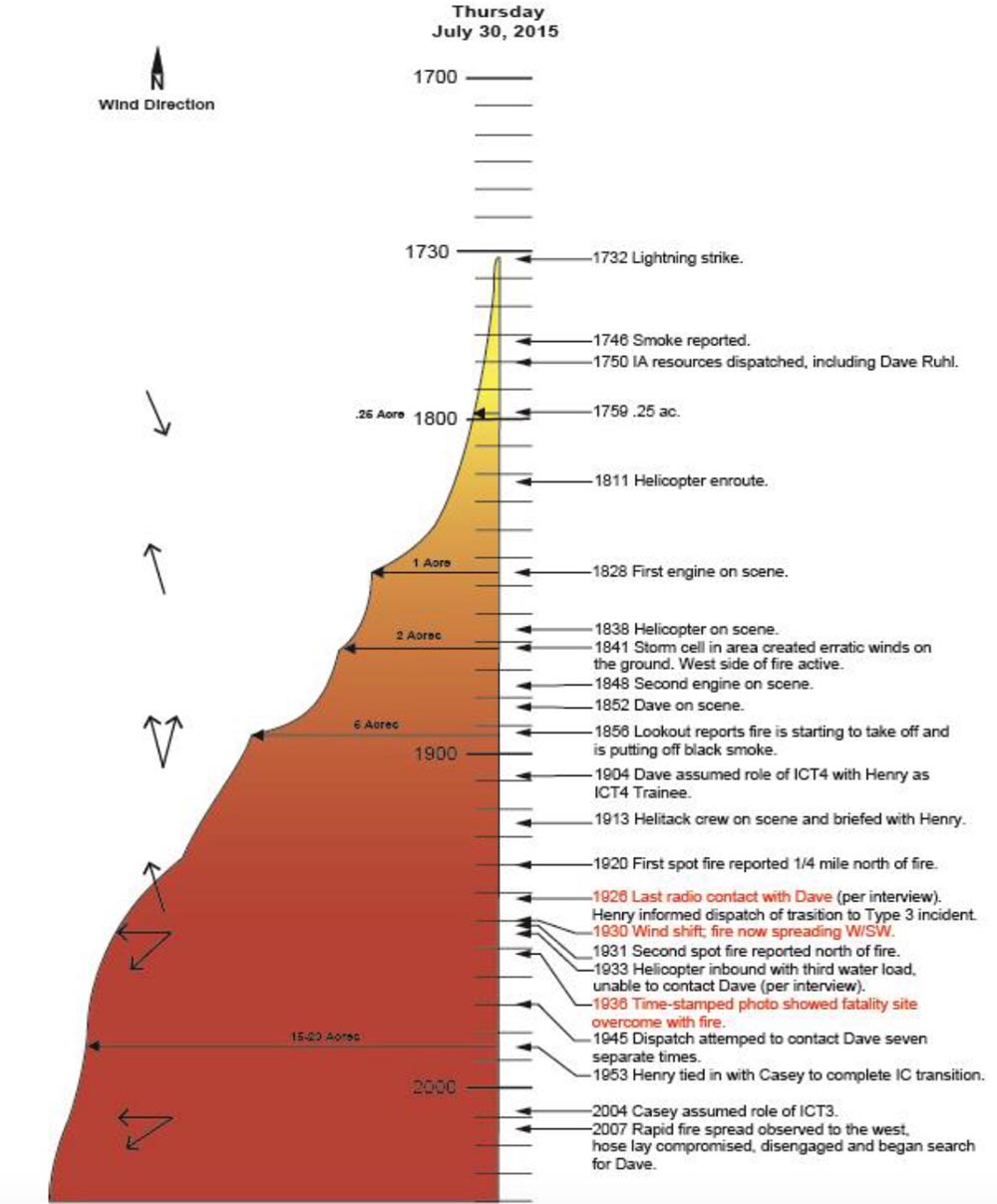 The U.S. Forest Service has released a preliminary report for the fatality of Dave Ruhl on the Frog Fire. Mr. Ruhl went missing the evening of July 30, 2015 while scouting the fire on foot, serving as incident commander during the initial attack in a very remote area of the Modoc National Forest 46 air miles east of Mt. Shasta, California. His body was found about 14 hours later approximately one-quarter mile from where he was last seen.
The U.S. Forest Service has released a preliminary report for the fatality of Dave Ruhl on the Frog Fire. Mr. Ruhl went missing the evening of July 30, 2015 while scouting the fire on foot, serving as incident commander during the initial attack in a very remote area of the Modoc National Forest 46 air miles east of Mt. Shasta, California. His body was found about 14 hours later approximately one-quarter mile from where he was last seen.
(Click on the image below, the timeline of the fire, to see a larger version.)
On August 4 the USFS said the autopsy determined that Mr. Ruhl’s death was attributed to “carbon monoxide poisoning and smoke inhalation”.
Not much information is in the report that sheds light on what led to his being entrapped by the fire, or what decisions were made or not made that led Mr. Ruhl to be in that spot at the wrong time. The wind direction did shift, which drove the fire in different directions, possibly resulting in his location becoming compromised.
The report’s narrative ends with this:
Although much will remain unknown about Dave’s decision making and complete route of travel, the final 100 feet of his route were accurately established. It appears he was cut-off and overcome by fire during the period of time that the fire spread shifted dramatically toward the west-southwest. Dave’s fire shelter was not deployed.
This document, called by the USFS a “learning review, preliminary report — narrative”, was released a little over two months after the fatality, a remarkably short amount of time for the agency. It comes after the USFS was extremely secretive during the first five days after the accident, refusing to divulge if a fire shelter was deployed, where the remains were found, or if the fatality was caused by a burnover, vehicle accident, lightning, or another type of accident.
comes after the USFS was extremely secretive during the first five days after the accident, refusing to divulge if a fire shelter was deployed, where the remains were found, or if the fatality was caused by a burnover, vehicle accident, lightning, or another type of accident.
The report confirms something that could be occurring at many fires — behind the scenes communications via cell phones. The Zone Duty Officer sent two text messages to Mr. Ruhl confirming that he was a TRAINEE Type 3 Incident Commander, and ordering him to clarify that over the radio to the others on the fire. The next text message sent to Mr. Ruhl was, “And I won’t text anymore. Sorry for that.” And finally, an hour and a half later after it became obvious he was missing, “I need you to call or text ASAP, we are very concerned on your status.” The screen shot of those four messages from the Zone Duty Officer’s iPhone did not include any replies from Mr. Ruhl.

The full report can be downloaded (2.1 mb).
All of the above images are from the report.
Articles on Wildfire Today tagged Dave Ruhl.



